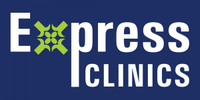Symptoms of Thyroid – What are the Causes, Tests, and Treatments?
Thyroid capacity tests are a progression of blood tests used to gauge how well your thyroid organ is functioning. Accessible tests incorporate the T3, T3RU, T4, and TSH.
The thyroid is a little organ situated in the lower-front piece of your neck. It’s in charge of directing a considerable lot of the body’s procedures, for example, digestion, vitality age, and state of mind.
The thyroid produces two noteworthy hormones: triiodothyronine (T3) and thyroxine (T4). On the off chance that your thyroid organ doesn’t deliver enough of these hormones, you may encounter indications, for example, weight gain, absence of vitality, and despondency. This condition is called hypothyroidism.
On the off chance that your thyroid organ delivers such a large number of hormones, you may experience weight reduction, elevated amounts of nervousness, tremors, and a feeling of being on a high. This is called hyperthyroidism.
Normally, a specialist who is worried about your thyroid hormone levels will arrange expansive screening tests, for example, the T4 or the thyroid-invigorating hormone (TSH) test. In the event that those outcomes return strange, your specialist will request further tests to pinpoint the explanation behind the issue.
Measurement of Serum Thyroid Hormones: T4 by RIA
T4 by RIA (radioimmunoassay) is the most used thyroid test of all. It is frequently referred to as a T7 which means that a resin T3 uptake (RT3u) has been done to correct for certain medications such as birth control pills, other hormones, seizure medication, cardiac drugs, or even aspirin that may alter the routine T4 test. The T4 reflects the amount of thyroxine in the blood. If the patient does not take any type of thyroid medication, this test is usually a good measure of thyroid function.
Measurement of Serum Thyroid Hormones: T3 by RIA
As expressed on our thyroid hormone creation page, thyroxine (T4) speaks to 80% of the thyroid hormone delivered by the ordinary organ and for the most part, speaks to the general capacity of the organ. The other 20% is triiodothyronine estimated as T3 by RIA. Now and then the ailing thyroid organ will begin delivering elevated amounts of T3 yet at the same time produce ordinary dimensions of T4. In this way estimation of the two hormones gives a much increasingly precise assessment of thyroid capacity.
Thyroid Binding Globulin
The greater part of the thyroid hormones in the blood is connected to a protein called thyroid restricting globulin (TBG). On the off chance that there is an abundance or lack of this protein, it modifies the T4 or T3 estimation however does not influence the activity of the hormone. On the off chance that a patient seems to have ordinary thyroid capacity, however an unexplained high or low T4, or T3, it might be because of expansion or abatement of TBG. Direct estimation of TBG should be possible and will clarify the anomalous worth. Overabundance TBG or low dimensions of TBG are found in certain families as a genetic quality. It causes no issue with the exception of dishonestly hoisting or bringing down the T4 level. These individuals are every now and again misdiagnosed as being hyperthyroid or hypothyroid, yet they have no thyroid issue and need no treatment.
Measurement of Pituitary Production of TSH
The pituitary creation of TSH is estimated by a strategy alluded to as IRMA (immunoradiometric test). Regularly, low dimensions (under 5 units) of TSH are adequate to keep the typical thyroid organ working appropriately. At the point when the thyroid organ winds up wasteful, for example, in early hypothyroidism, the TSH moves toward becoming raised despite the fact that the T4 and T3 may at present be inside the “typical” go. This ascent in TSH speaks to the pituitary organ’s reaction to a drop in circling thyroid hormone; it is generally the primary sign of thyroid organ disappointment. Since TSH is ordinarily low when the thyroid organ is working appropriately, the disappointment of TSH to rise when flowing thyroid hormones are low means that hindered pituitary capacity. The new “delicate” TSH test will indicate low dimensions of TSH when the thyroid is overactive (as a typical reaction of the pituitary to attempt to diminish thyroid incitement). Elucidations of the TSH level relies on the dimension of thyroid hormone; in this way, the TSH is normally utilized in blend with other thyroid tests, for example, the T4 RIA and T3 RIA.
TRH Test
In ordinary individuals, TSH emission from the pituitary can be expanded by giving a shot containing TSH Releasing Hormone (TRH…the hormone discharged by the nerve center which advises the pituitary to deliver TSH). A gauge TSH of 5 or less, for the most part, goes up to 10-20 subsequent to giving an infusion of TRH. Patients with an excessive amount of thyroid hormone (thyroxine or triiodothyronine) won’t demonstrate an ascent in TSH when given TRH. This “TRH test” is by and by the most touchy test in identifying early hyperthyroidism. Patients who show an excess of reaction to TRH (TSH rises more prominent than 40) might be hypothyroid. This test is additionally utilized in malignant growth patients who are taking thyroid substitution to check whether they are on adequate medicine. It is at times used to gauge if the pituitary organ is working. The new “touchy” TSH test (above) has wiped out the need for playing out a TRH test in most clinical circumstances.








